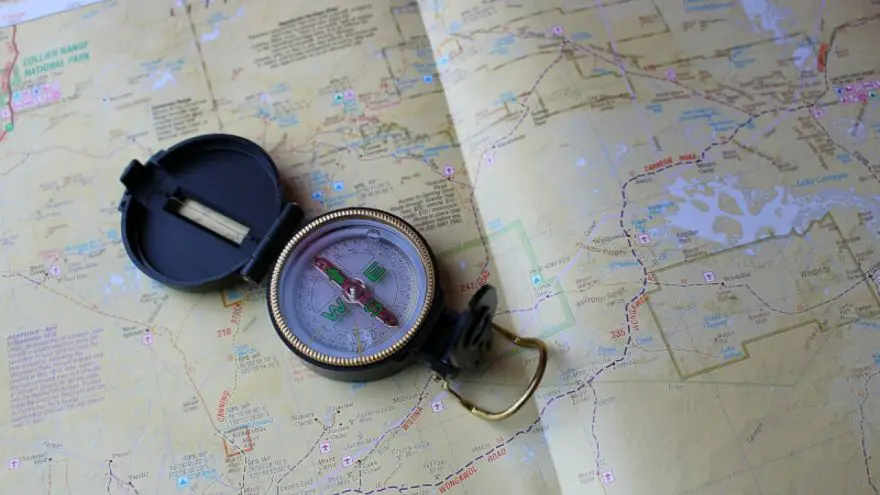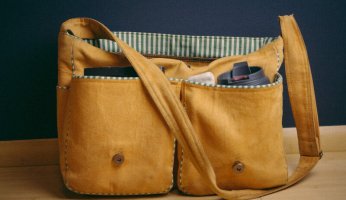How to Correctly Use a Compass
 How to Correctly Use a Compass
gearweare.net
How to Correctly Use a Compass
gearweare.net
In most facets of everyday life, the compass has become an arcane tool. The ease of using GPS makes these satellite operated systems much more practical for navigating the modern world. However, in the backcountry, were signals can never be relied on for too long, a compass, paired with a topographic map, remains the best method for rout finding.
In the wilderness environment, a compass is also superior to GPS because it is fail proof. GPS is battery powered, and batteries can die. Furthermore, the devices used to access GPS can be broken, and crash when they get wet. A compass and map never just stop working though, and usually survive being dropped. Short of putting your compass down and walking away, this is a tool that can always be counted on, in any type of environment, no matter how far you are from civilization.
Table of Contents
The Basic Components of a Compass
These days there are plenty of fancy compasses on the market with a plethora of extra features, however most people will get by just fine with the most basic model. Do make sure to get one with all the basics though. Key-chain compasses can be fun but won’t do you much good if your lost in the backcountry.
- Magnetized Needle: This needle is pulled toward the magnetic pole in the north, and is what allows the use of a compass for navigation. The end of the needle oriented toward the magnetic pole is typically painted red. The needle is suspended in damping fluid, and moves freely as its orientation changes.
- Rotating Bezel: Also called the azimuth ring, this part of the compass surrounds the housing for the magnetized needle. This circular ring has markings from 0? to 360? around the edge. It can be rotated independently from the baseplate and is integral to navigation.
- Orienting Arrow: Located within the housing of the magnetic needle, the orienting arrow is crucial for staying on rout.
- Baseplate: This part of the compass is flat and often translucent. It is how you carry the compass, can be used as a straightedge, and has markings that help with rout finding. Many baseplates also include a small ruler.
- Direction of Travel Arrow: This small arrow is the most important marking on the baseplate. Once you have set your compass up, this arrow will point in the direction that you are walking.
Other Features that Compasses Can Have
Modern compasses may also include higher tech features. These extras are typically designed to make adjusting your compass easier, but also cost quite a bit more. However, the frequent backpacker or world traveler may find these features integral.
- Declination Adjustment: Compasses point to magnetic north; however, this direction is different from true north. Depending on where you are on the globe, the difference in these two locations varies. Declination is the process if accounting for this difference, and is something that needs to be measured every time you set up your compass. With a declination adjustment though, a compass can be set to the appropriate declination. This setting will work until you use your compass in a new region.
- Global Needle: Most compasses are set up to work in either the Northern or Southern hemisphere. A compass with a global needle has been calibrated to work in all areas of the world.
- Clinometer: Allows you to measure the steepness of a slope.
- Sighting Meter: Using this mirror the exact location of far-off features in the landscape can be measured.
- Magnifying Lens: Some compasses have magnifying lenses built into the baseplate.
How to Set Up Your Compass
Compasses can be set up with or without a map. However, using a map will allow you to more accurately take your bearings, and navigation with both a compass and a map is recommended for backcountry travel.
Using a map:
To set up your compass using a map, you first need to know where you are on said map. If you don’t, use triangulation, which is explained later in this article.
Once you have found where you are, look at where you are going. Draw a line between these two locations. Now place the compass on the map, with the edge of the compass following the same line. The direction of travel arrow is now facing the correct bearing.
After that, rotate the bezel until north on the compass and north on the map are the same, making sure to account for the differences in magnetic and true north. This puts the orienting arrow in the right place. Stand up without swiveling the bezel, and turn in a circle until the magnetized needle lines up with the orienting arrow. The direction of travel arrow is now pointing the way you should go
Without a map:
Calibrating your compass without a map is basically the same process. The only difference is that a navigational direction or visible landmark need to be used to decide which way to go.
Declination
Most maps include information on the declination for the given area. The National Oceanic and Atmospheric Administration also have this information on their website. Once you have the proper number, the declination must be subtracted or added to the bearings for east and west, depending on where you are in the country. Unless you have a compass with declination adjustment, this must be done every time you recalibrate.
Triangulation
If you are having trouble finding yourself on the map, it is possible to pinpoint your location using triangulation. Pick out two distant objects more than 45? apart from each other, and take the bearing for each. Where the two bearing lines cross is approximately where you stand.
Keep Compasses Away from Metal
The magnetic field given off by large metals objects can disrupt the magnetic pull on your compasses needle, and make it point the wrong direction. Avoid setting up your compass next to your car or a large building. Also, try to store your compass somewhere away from metal, as magnetic disruption can permanently alter the direction of your compass over time.











